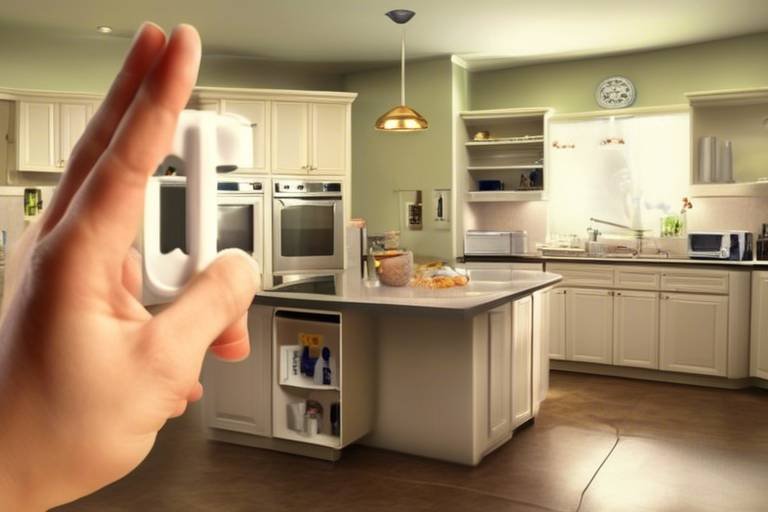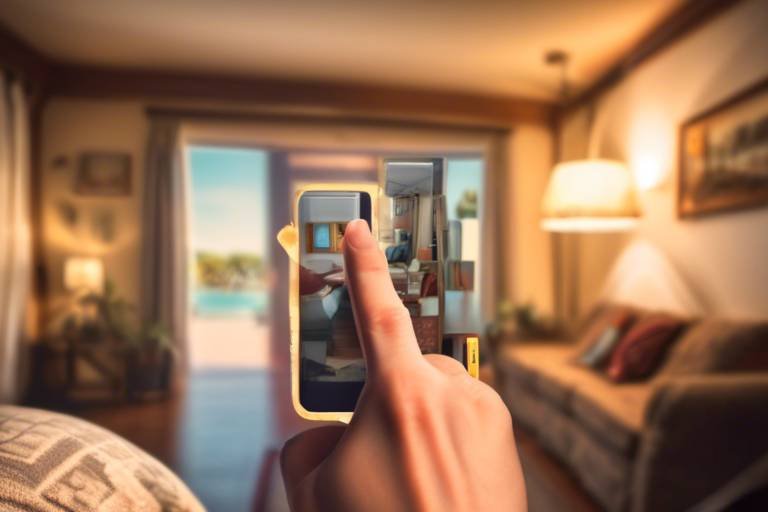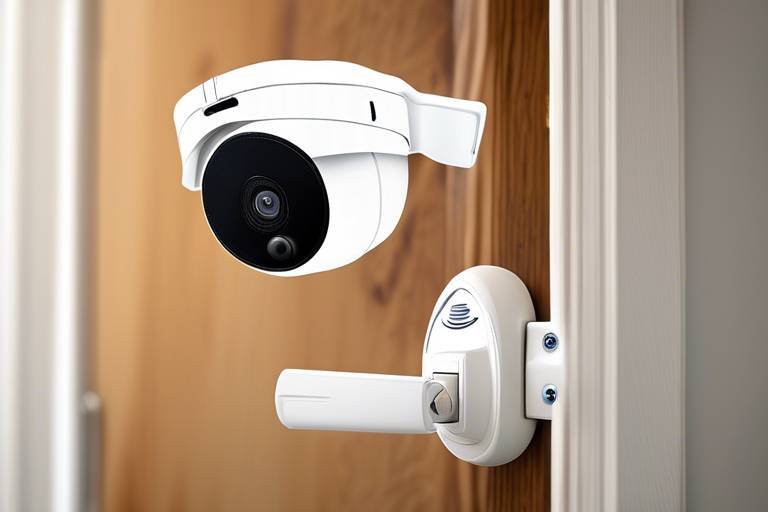Building a Safe and Secure Home Office
In today’s world, where remote work has become the norm for many, creating a safe and secure home office is more important than ever. Imagine sitting at your desk, fully focused on your tasks, knowing that both your physical and digital environments are secure. This article dives deep into the essential strategies for crafting such a workspace. We’ll cover everything from physical security measures like locks and alarms to digital safety protocols that keep your sensitive information safe from prying eyes. Let’s embark on this journey to transform your home office into a fortress of productivity and peace of mind!
Before you start fortifying your workspace, it’s crucial to understand your specific security requirements. Think of it like preparing for a journey; you wouldn’t set off without a map! Start by evaluating potential risks and vulnerabilities in your home office setup. What are the most valuable items in your office? Are there any entry points that could be easily accessed by intruders? Conducting a thorough assessment will help you identify the areas that need the most attention. Consider asking yourself:
- What equipment do I need to protect?
- Are there any weak points in my home security?
- How often do I work with sensitive information?
By answering these questions, you’ll have a clearer picture of your security needs, allowing you to implement the right measures to safeguard your workspace.
Implementing physical security measures is essential for deterring theft and unauthorized access. Think of your home office as a treasure chest; you wouldn’t leave it unlocked, would you? Here, we discuss various strategies that can enhance your office's security, ensuring that your workspace remains a sanctuary for your productivity.
One of the first steps in securing your home office is selecting high-quality locks for doors and windows. Just as you wouldn’t skimp on the locks for your front door, your office deserves the same level of protection. There are several types of locks available, including deadbolts, smart locks, and padlocks, each offering different levels of effectiveness. For instance:
| Type of Lock | Security Level | Best For |
|---|---|---|
| Deadbolt | High | Main entry doors |
| Smart Lock | Medium to High | Convenient access |
| Padlock | Medium | Gates and sheds |
Choosing the right locks can significantly enhance your home office’s security, so make sure to invest in high-quality options!
In this tech-savvy age, smart locks have become a game-changer for home security. These devices not only offer convenience but also enhanced security features that traditional locks may lack. Imagine being able to lock or unlock your door remotely, monitor who enters and exits, and receive alerts on your smartphone. Smart locks often come with features like keyless entry, temporary access codes for visitors, and even integration with home security systems. They’re like having a personal security guard at your doorstep!
Reinforcing doors and windows is another practical way to secure your home office. Think of these entry points as the gateways to your sanctuary. You can enhance their security by:
- Installing security bars on windows
- Using door jammers or security hinges
- Adding window film to prevent shattering
These measures not only deter potential intruders but also provide peace of mind, allowing you to focus on your work without worrying about security breaches.
While physical security is crucial, digital security is just as important. In a world where cyber threats lurk around every corner, protecting sensitive information and maintaining cybersecurity in your home office is essential. Start by using strong, unique passwords for all your accounts and consider implementing two-factor authentication for an extra layer of protection. Regularly updating your software and using reputable antivirus programs can also help safeguard your digital workspace.
A safe workspace not only promotes productivity but also enhances your overall well-being. An ergonomic setup can prevent injuries and make long hours at the desk more comfortable. When selecting chairs and desks, look for options that provide adequate support and encourage good posture. Remember, your body is your most important tool, so treat it well!
Choosing ergonomic furniture is key to creating a comfortable work environment. Consider factors like adjustability, lumbar support, and the height of your desk. A chair that supports your lower back and a desk that allows for proper arm positioning can make a world of difference. Think of your office setup as a cozy nest; it should cradle you, not strain you!
A well-organized workspace minimizes distractions and hazards. Clutter can create chaos in your mind, making it hard to concentrate. Take some time to declutter your desk and optimize your office layout. Use organizers, shelves, and filing systems to keep everything in its place. A tidy workspace is not just visually appealing; it’s also a haven for creativity and focus.
Q: What are the best types of locks for a home office?
A: High-quality deadbolts and smart locks are recommended for securing your home office effectively.
Q: How can I improve my digital security?
A: Use strong passwords, enable two-factor authentication, and keep your software updated to protect your sensitive information.
Q: What ergonomic features should I consider when buying office furniture?
A: Look for adjustable chairs, lumbar support, and desks that allow for proper arm positioning to enhance comfort and prevent injuries.
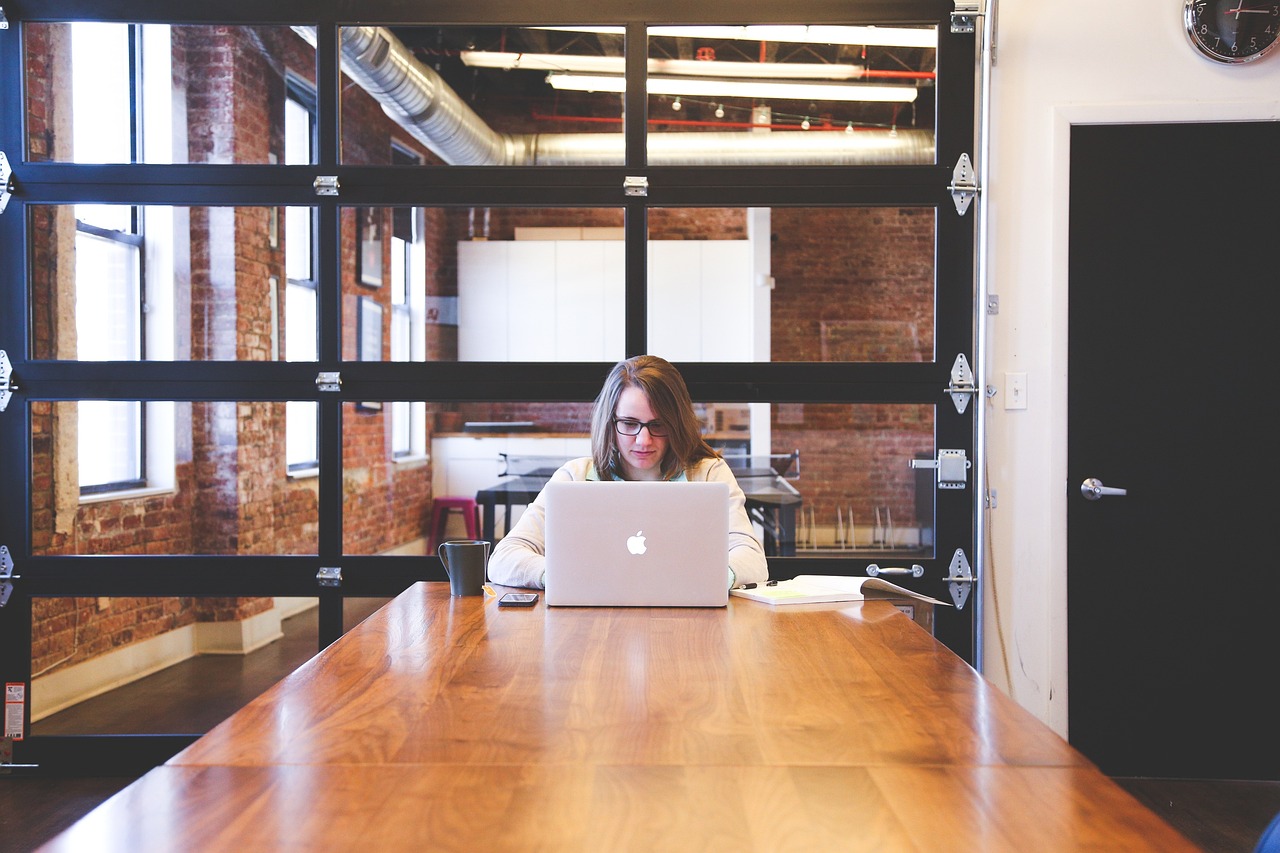
Assessing Your Home Office Security Needs
When it comes to creating a safe and secure home office, the first step is to assess your specific security needs. Just like you wouldn't drive a car without checking the brakes, you shouldn't set up your workspace without evaluating potential risks and vulnerabilities. Start by asking yourself some critical questions: What valuable items do I have in my office? Am I at risk of theft or unauthorized access? Understanding these factors can help you identify the right security measures to implement.
Begin by conducting a thorough security audit of your home office. Look around and take note of the items that hold value, whether they are physical assets like computers and documents or digital assets such as sensitive data stored on your devices. By categorizing your assets into high, medium, and low risk, you can prioritize your security efforts effectively. For instance, if you have confidential client information on your laptop, that would fall into the high-risk category, warranting more stringent security measures.
Next, consider the layout of your home office. Is it easily visible from the street, or is it tucked away in a corner? The visibility of your workspace can play a significant role in deterring potential intruders. If your office is easily accessible from outside, you may want to consider additional security measures such as motion sensor lights or even landscaping that obstructs clear views into your workspace.
Another important aspect to evaluate is your digital security. In today’s world, cyber threats are as prevalent as physical ones. Are you using strong passwords? Do you have firewalls and antivirus software in place? Assessing your digital security needs is just as crucial as evaluating physical security. Consider creating a checklist that includes:
- Strong, unique passwords for all accounts
- Regular updates for software and systems
- Two-factor authentication for sensitive accounts
- Regular backups of important data
Finally, don’t forget to involve your family members or anyone else who might access your home office. Educating them about security protocols can significantly enhance the overall safety of your workspace. Think of it like a team effort; when everyone is aware of the security measures in place, it creates a more secure environment.
In summary, assessing your home office security needs is an ongoing process that requires you to be proactive. By identifying risks, evaluating your physical and digital security, and involving others in your efforts, you can create a secure and productive workspace that allows you to focus on what truly matters—your work!
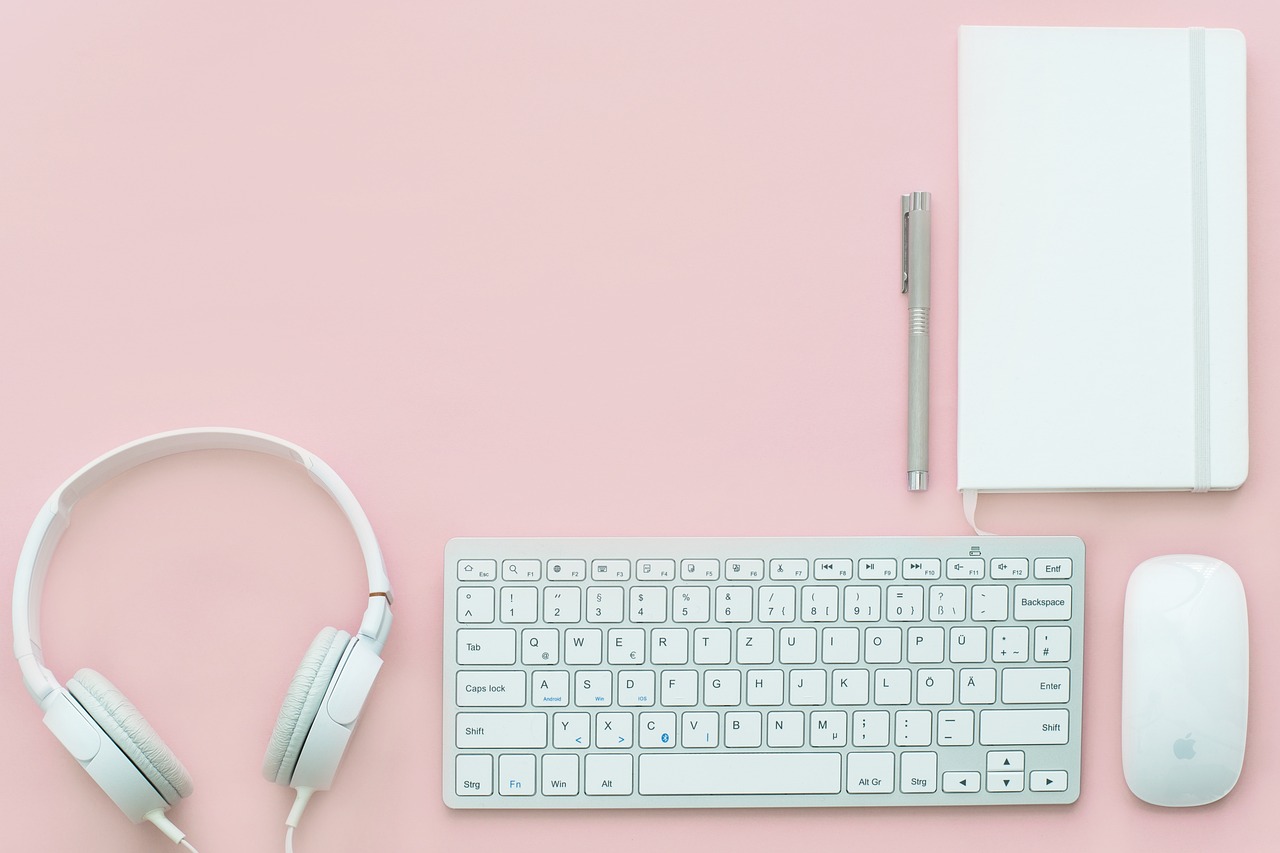
Physical Security Measures
When it comes to securing your home office, play a crucial role in protecting both your workspace and sensitive information. Imagine this: you’ve invested in top-notch equipment, important documents, and maybe even some personal items that mean a lot to you. The last thing you want is for a thief to waltz in and take it all away. Therefore, implementing effective security measures is not just a precaution; it’s a necessity.
One of the first steps in enhancing your home office security is to assess your current setup. Look around—are your doors and windows adequately secured? Are there any weak points that could be easily exploited? A good way to start is by evaluating the entry points of your office. This includes doors, windows, and any other access points that could lead to unauthorized entry. In many cases, simply upgrading your locks or reinforcing your windows can make a significant difference.
Selecting high-quality locks is vital for securing your home office. Not all locks are created equal, and the type you choose can make or break your security. For instance, consider the difference between a standard lock and a deadbolt. A deadbolt provides a much higher level of security, making it far more difficult for intruders to gain access. Additionally, there are various lock types to consider:
- Deadbolts: These locks provide superior protection and are highly recommended for external doors.
- Smart Locks: These modern locks offer convenience and can be controlled via your smartphone.
- Keypad Locks: These locks eliminate the need for physical keys, allowing for easy access without the risk of losing a key.
Speaking of smart locks, let’s dive into their benefits. Smart locks are revolutionizing the way we think about home security. They allow you to lock and unlock your doors remotely, monitor access, and even set temporary codes for guests or service personnel. Imagine being able to check if you locked the door from your phone while you're halfway across town! This level of control not only enhances security but also adds a layer of convenience to your daily routine.
In addition to choosing the right locks, reinforcing your doors and windows is essential. You can start by installing security bars on windows, especially those that are easily accessible from the ground. For doors, consider adding a security door frame or a door brace that makes it much harder for someone to force their way in. These physical barriers act as a strong deterrent against potential intruders.
Moreover, don’t forget about your garage or any additional entry points you might have. Often overlooked, these areas can provide easy access for thieves if not properly secured. A simple yet effective measure is to install motion-sensor lights around your property. These lights can scare off would-be intruders and help you feel more secure in your workspace.
While we focus on physical security, let’s not forget that digital security is equally important. In today’s world, protecting your sensitive information is just as crucial as safeguarding your physical assets. Implementing strong passwords, using two-factor authentication, and regularly updating your software can help keep your data safe from cyber threats. A comprehensive approach to security ensures that you can work confidently in your home office, knowing that both your physical and digital environments are protected.
Q: What is the best type of lock for a home office?
A: Deadbolt locks are generally considered the best option for securing doors, while smart locks offer convenience and high-tech features.
Q: How can I reinforce my windows for better security?
A: You can install security bars, use window locks, or apply shatter-resistant film to strengthen your windows against break-ins.
Q: Are smart locks safe?
A: Yes, smart locks can be very safe if they are from reputable brands and are regularly updated. They provide additional features such as remote access and monitoring, enhancing your overall security.
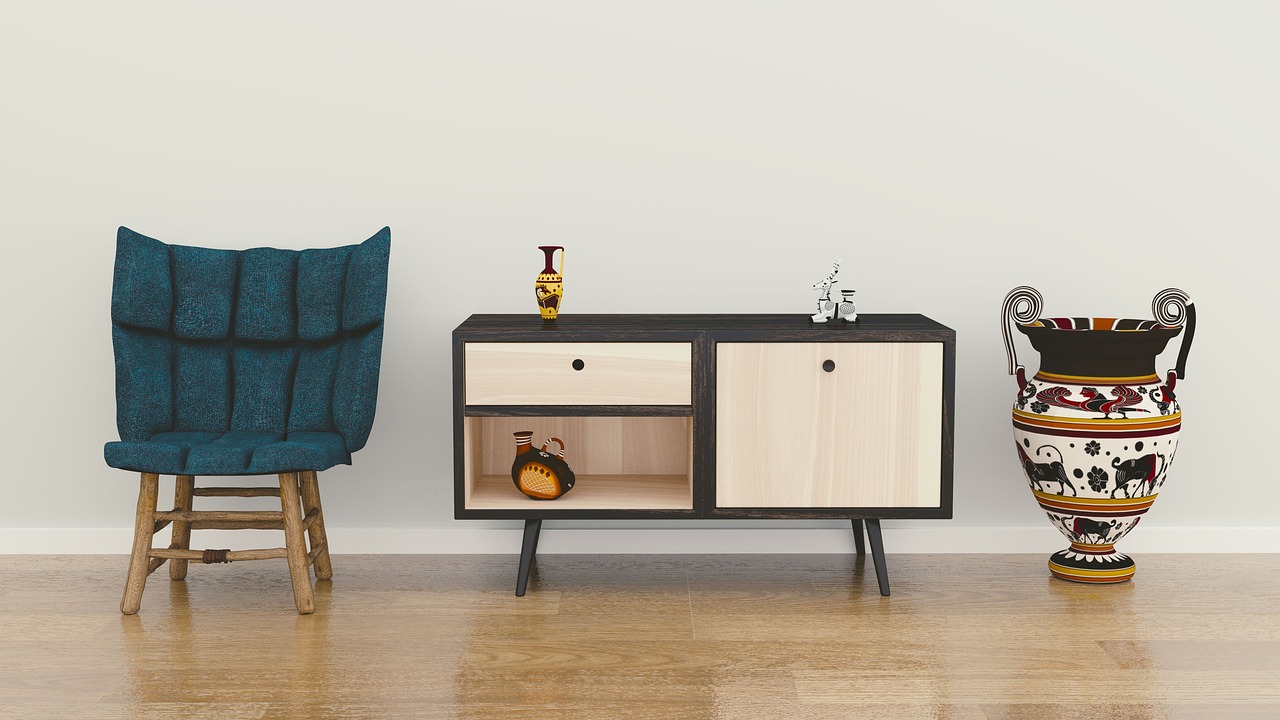
Choosing the Right Locks
When it comes to securing your home office, is not just a matter of convenience; it's a crucial step in safeguarding your workspace. Imagine your home office as a treasure chest filled with valuable information, equipment, and personal belongings. Just like a treasure chest needs a robust lock to keep its contents safe, your office requires high-quality locks to deter any unwelcome intruders. But with so many options available, how do you know which locks are the best fit for your needs?
First and foremost, consider the different types of locks available. Here are a few popular options:
- Deadbolts: These are a must-have for external doors. They offer a higher level of security compared to standard doorknob locks.
- Smart locks: These high-tech locks can be controlled remotely, allowing you to lock or unlock your door from anywhere using your smartphone.
- Keypad locks: Say goodbye to fumbling for keys! Keypad locks allow you to enter a code to gain access, which can be more convenient and secure.
When selecting locks, it's important to assess the specific vulnerabilities of your home office. For instance, if your office is located in a busy area or has easy access from the street, investing in high-security deadbolts may be wise. On the other hand, if your office is tucked away in a quiet corner of your home, a smart lock might be sufficient. It's all about understanding your unique situation and what level of security you need.
Another aspect to consider is the material and build quality of the locks. Look for locks made from durable materials such as hardened steel, which can withstand brute force attacks. Additionally, check for features like anti-drill plates and pick-resistant designs, as these can significantly enhance the security of your locks.
Finally, don't forget to think about installation. A lock is only as good as its installation. Even the best lock can be ineffective if it's poorly installed. If you're not comfortable with DIY projects, consider hiring a professional locksmith to ensure that your locks are installed correctly and securely. Remember, a well-secured home office is not just about having the right locks; it’s about ensuring they are properly fitted and maintained.
In conclusion, the right locks can make all the difference in securing your home office. By understanding the various types of locks, assessing your specific needs, and ensuring proper installation, you can create a safe environment that allows you to focus on your work without worry. After all, a secure home office is a productive home office!
1. What type of lock is best for a home office?
A high-security deadbolt is generally recommended for external doors, while smart locks can provide convenience and security for internal access.
2. Are smart locks safe?
Yes, smart locks can be very secure, especially if they come with features like two-factor authentication and encryption. However, it's essential to keep the associated app and firmware updated.
3. How often should I change my locks?
It's a good practice to change your locks if you've moved into a new home, after a break-in, or if you suspect someone may have unauthorized access.
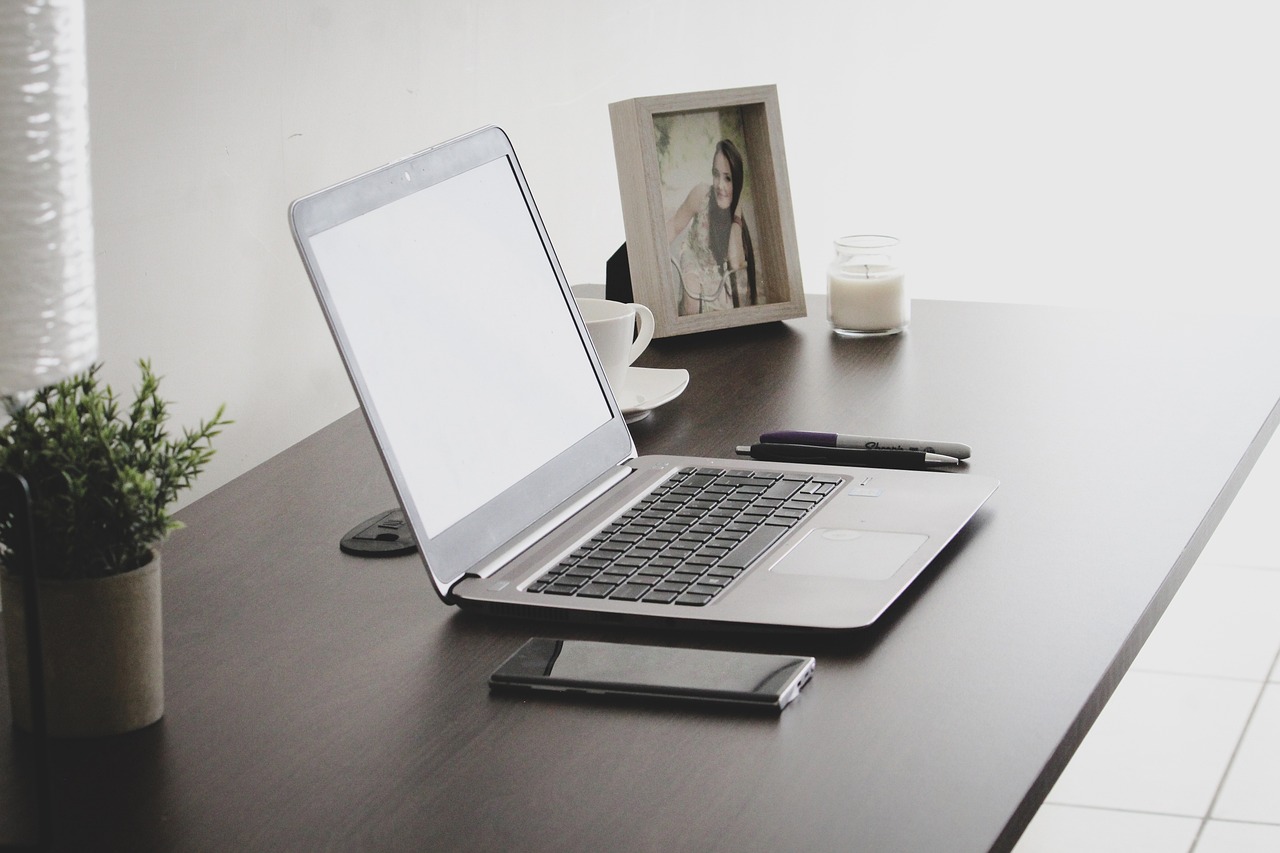
Smart Lock Technology
In today's fast-paced world, is revolutionizing the way we secure our home offices. Gone are the days of fumbling for keys or worrying about lost duplicates. Smart locks offer a seamless blend of convenience and security, making them an ideal choice for anyone looking to enhance their home office security. But how do they actually work? Let’s dive into the fascinating world of smart locks!
At their core, smart locks utilize advanced technology to allow you to lock and unlock your doors using your smartphone, a keypad, or even biometrics like fingerprints. This means you can grant access to trusted individuals without needing to be physically present. Imagine being able to let a delivery person drop off a package while you’re busy in a meeting, all with a few taps on your phone!
One of the standout features of smart locks is their ability to keep you informed. Many models come equipped with real-time notifications that alert you whenever someone enters or exits your office. This feature is particularly beneficial if you have service personnel or visitors who need occasional access. You can monitor who’s coming and going, ensuring that your workspace remains secure.
Moreover, smart locks can be integrated with other home automation systems, creating a cohesive security network. For instance, when you leave your home office, you can set your smart lock to automatically engage while simultaneously activating your security cameras. This interconnectedness not only enhances your security but also provides peace of mind. It’s like having a personal security team at your fingertips!
While the benefits are clear, you might be wondering about the potential drawbacks. Some users express concerns regarding battery life and the possibility of being locked out if their smartphone dies. However, most smart locks come with backup keys or alternative entry methods, ensuring you’re never completely locked out. Plus, many models feature low-battery alerts, so you can replace the batteries before any issues arise.
When considering a smart lock for your home office, it’s essential to evaluate the various types available. Here’s a quick comparison of popular options:
| Type of Smart Lock | Key Features | Pros | Cons |
|---|---|---|---|
| Keypad Locks | PIN code access | No keys needed, easy to share codes | Codes can be forgotten or shared with unauthorized users |
| Bluetooth Locks | Smartphone access | Convenient, no physical keys | Dependent on phone battery and connectivity |
| Smart Deadbolts | Combination of traditional and smart locking | High security with smart features | Installation can be complex |
In conclusion, investing in smart lock technology can significantly boost the security of your home office. With their array of features and ease of use, smart locks not only protect your workspace but also enhance your overall productivity. Just think of it as a digital guardian, always ready to keep your work environment safe and sound.
Q: Are smart locks easy to install?
A: Most smart locks are designed for easy installation and can typically be done with basic tools. However, if you’re unsure, it’s best to consult a professional.
Q: Do smart locks work during a power outage?
A: Yes, many smart locks have backup battery options that allow them to function even during power outages. Always check the specifications of the model you choose.
Q: Can I access my smart lock remotely?
A: Yes, many smart locks offer remote access through mobile apps, allowing you to control your lock from anywhere.

Reinforcing Entry Points
When it comes to securing your home office, is a critical step that should not be overlooked. Your doors and windows are the primary gateways to your workspace, and if they are not adequately secured, they can become vulnerable targets for intruders. Imagine your home office as a fortress; every entry point is a potential weak spot that can be exploited. By fortifying these areas, you can significantly reduce the risk of unauthorized access and theft.
One effective way to reinforce your entry points is by installing high-quality deadbolts on all exterior doors. Unlike standard locks, deadbolts provide an extra layer of security by requiring a key or thumb turn to open, making it much more difficult for would-be intruders to gain entry. Additionally, consider using reinforced strike plates—these are metal plates that are installed around the door frame to make it harder for someone to kick the door in. When combined with a sturdy door, these enhancements can make your home office feel like a high-security zone.
Windows are another crucial area that often gets neglected in security discussions. To safeguard your windows, consider installing window locks that are specifically designed to prevent them from being opened from the outside. For added protection, you can use security film, a transparent layer applied to the glass that makes it shatter-resistant. This means that even if someone attempts to break in, the glass will hold together, giving you precious time to react.
Moreover, you might want to think about installing security bars on ground-level windows. While they might seem a bit extreme, they can be an effective deterrent against break-ins. Just like a castle with its fortified walls, these bars can serve as a visible warning to potential intruders that your home office is not an easy target. However, ensure that they are designed to allow for easy escape in case of emergencies.
Another innovative approach is to integrate smart technology into your home office security. Smart locks and security systems can alert you to any suspicious activity in real-time. Imagine being able to monitor your home office from anywhere via your smartphone! This level of control not only enhances security but also provides peace of mind, allowing you to focus on your work without worrying about your safety.
In summary, reinforcing your entry points is essential for creating a safe and secure home office. By investing in robust locks, window security measures, and smart technology, you can fortify your workspace against potential threats. Remember, the goal is to create an environment where you can work productively without the constant worry of security breaches.
- What are the best types of locks for home office security? High-quality deadbolts and smart locks are among the best options for securing your home office.
- How can I secure my windows? Install window locks, use security film, and consider adding security bars for additional protection.
- Is it worth investing in smart security technology? Absolutely! Smart security systems provide real-time alerts and remote monitoring, enhancing your overall security.
- What should I do if I suspect a security breach? Immediately contact local authorities and review your security measures to prevent future incidents.
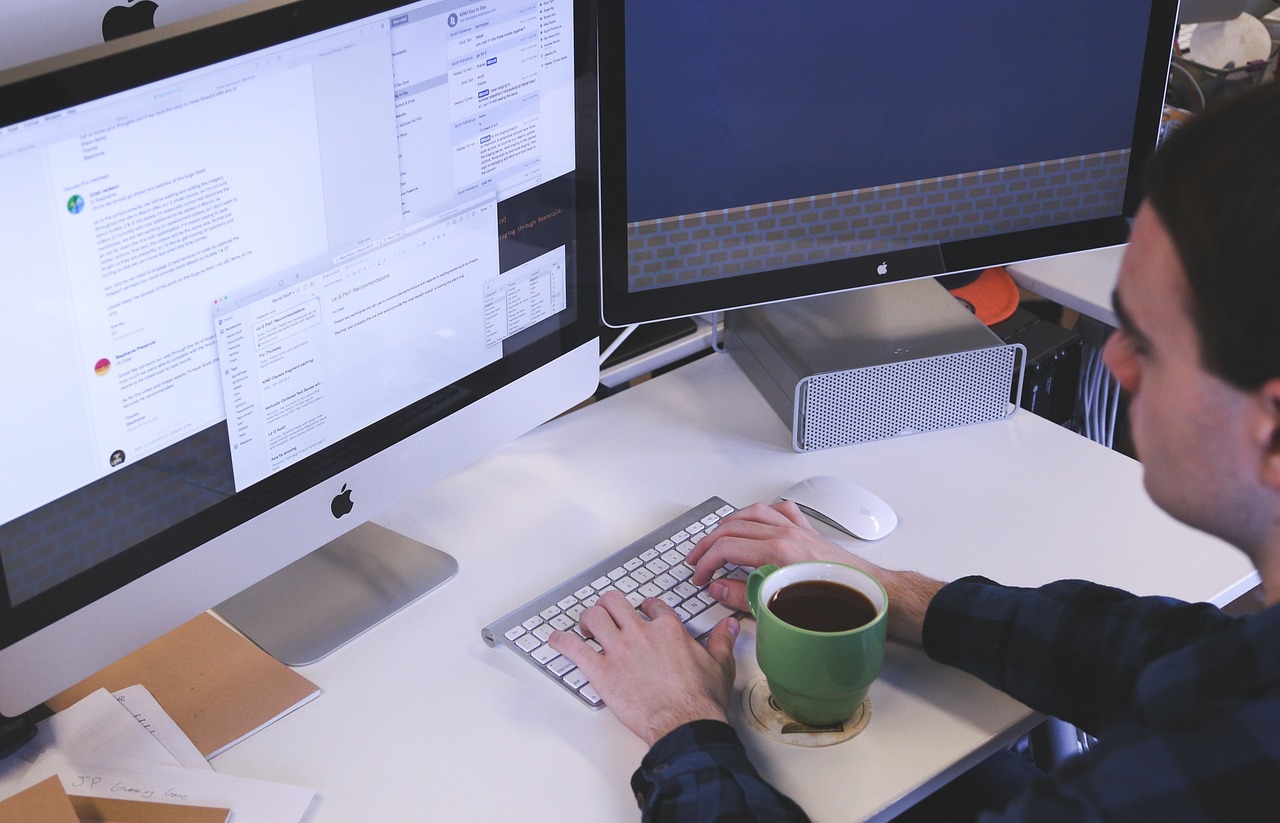
Creating a Secure Digital Environment
In today's digital age, securing your home office goes far beyond just locking the door. It's essential to create a secure digital environment that protects your sensitive information from cyber threats. Think of your digital security as a fortress, with multiple layers of defense to keep intruders at bay. But where do you start? Let's break it down.
First and foremost, strong passwords are your first line of defense. Using weak passwords is like leaving the front door of your home wide open. Ensure that your passwords are complex, combining uppercase letters, lowercase letters, numbers, and special characters. It's also wise to change your passwords regularly and avoid using the same password across multiple accounts. A password manager can help you keep track of all your unique passwords securely.
Next, consider enabling two-factor authentication (2FA) on all accounts that offer it. This extra layer of security requires not just your password but also a second form of verification, such as a text message or authentication app code. Imagine it as having a guard at your front gate who checks both your ID and a secret passphrase before letting you in.
Another critical aspect of creating a secure digital environment is maintaining up-to-date software. Regularly updating your operating system, applications, and antivirus software is like reinforcing your fortress walls. Cybercriminals often exploit vulnerabilities in outdated software, so staying current can help protect you from potential attacks.
Additionally, be aware of phishing scams. These deceptive tactics often come in the form of emails or messages that appear legitimate but are designed to steal your personal information. Always double-check the sender's email address and avoid clicking on suspicious links. If something seems off, trust your instincts and investigate further before taking action.
To further enhance your digital security, consider using a Virtual Private Network (VPN). A VPN encrypts your internet connection, making it difficult for hackers to intercept your data, especially when using public Wi-Fi. Think of it as a secure tunnel that shields your information from prying eyes.
Lastly, regularly back up your data. In case of a cyberattack or hardware failure, having a backup ensures you won’t lose valuable information. Use external hard drives or cloud storage solutions to keep your data safe and accessible. It's like having a safety deposit box for your most important documents.
In summary, creating a secure digital environment in your home office requires a multifaceted approach. By implementing strong passwords, enabling two-factor authentication, keeping software updated, being vigilant against phishing, using a VPN, and backing up data, you can build a robust defense against cyber threats. Remember, security is not a one-time task but an ongoing process that evolves with the digital landscape.
- What is the most important aspect of digital security?
The most important aspect is using strong, unique passwords for each of your accounts and enabling two-factor authentication whenever possible.
- How often should I update my passwords?
It's recommended to update your passwords every three to six months or immediately if you suspect a breach.
- What should I do if I receive a suspicious email?
Do not click on any links or download attachments. Verify the sender's email address and report the email as phishing if it seems fraudulent.
- Is using public Wi-Fi safe for work?
Public Wi-Fi can be risky. Always use a VPN when accessing sensitive information on public networks.

Establishing a Safe Workspace
Creating a safe workspace is not just about locking your doors and shutting your windows; it's about fostering an environment that promotes both productivity and well-being. Imagine your home office as a sanctuary where creativity flows and tasks get done efficiently. To achieve this, you need to consider several factors that contribute to a safe and functional workspace.
One of the first things to think about is ergonomics. Have you ever spent hours hunched over your laptop, only to end up with a sore back and stiff neck? That discomfort can be avoided by investing in ergonomic furniture. When selecting chairs and desks, look for options that support your body’s natural posture. For instance, an adjustable chair can help you find the perfect height, while a desk that allows you to alternate between sitting and standing can keep your energy levels up throughout the day. Here are some key factors to consider:
- Chair Height: Your feet should comfortably touch the floor.
- Desk Height: Your elbows should be at a 90-degree angle when typing.
- Screen Position: The top of your monitor should be at or just below eye level.
Additionally, consider the layout of your workspace. A well-organized office can significantly reduce distractions and hazards. Think of your workspace as a stage where you perform your best work—everything needs to be in its right place. Here are some tips for optimizing your home office layout:
- Keep essential items within arm's reach.
- Use cable management solutions to prevent tripping hazards.
- Incorporate proper lighting to reduce eye strain.
Decluttering your workspace can also contribute to a safer environment. A cluttered desk can lead to unnecessary stress and distractions. Try to implement a system where you regularly assess what you need on your desk and what can be stored away. Consider using storage solutions like filing cabinets or desk organizers to keep everything tidy. Remember, a clean workspace not only looks better but also helps you think more clearly.
Moreover, it's essential to think about your mental well-being in your home office. A safe workspace is not just about physical safety; it’s also about creating an atmosphere that feels secure and comfortable. Incorporating elements like plants can improve air quality and boost your mood. Personal touches, like artwork or family photos, can make your space feel more inviting. After all, when you feel good in your environment, you’re more likely to produce great work.
In conclusion, establishing a safe workspace is a multifaceted approach that encompasses ergonomic furniture choices, an organized layout, and a calming atmosphere. By taking the time to create a workspace that prioritizes safety and comfort, you set yourself up for success, allowing your creativity and productivity to flourish.
Q: What is ergonomic furniture?
A: Ergonomic furniture is designed to support the body in a way that reduces strain and discomfort, promoting better posture and overall health.
Q: How can I keep my workspace organized?
A: Regularly assess what items you need at your desk, utilize storage solutions, and establish a routine for decluttering.
Q: Why is a safe workspace important?
A: A safe workspace enhances productivity, minimizes distractions, and promotes physical and mental well-being.

Ergonomic Furniture Choices
When it comes to creating a home office that not only looks good but also feels good, ergonomic furniture is your best friend. Imagine sitting in a chair that supports your back just right, allowing you to focus on your work without constantly shifting around. It's like having a personal assistant dedicated to your comfort! Choosing the right furniture can significantly impact your productivity and overall well-being. So, let’s dive into what makes a piece of furniture truly ergonomic.
First off, let’s talk about chairs. An ergonomic chair should have adjustable features that allow you to customize it for your body type. Look for chairs with lumbar support that can be adjusted to fit the curve of your lower back. This feature is crucial because it helps prevent back pain, which is a common complaint among those who work long hours at a desk. Additionally, consider chairs with adjustable armrests and seat height; these features can help reduce strain on your neck and shoulders.
Now, let’s not forget about desks! An ergonomic desk should allow you to maintain a comfortable posture while you work. A height-adjustable desk is a fantastic option, as it lets you alternate between sitting and standing throughout the day. This flexibility not only keeps your body engaged but also boosts your energy levels. Imagine being able to stand up and stretch while still getting work done! It’s a game-changer.
When selecting a desk, also consider the depth and width. You want enough space to accommodate your computer, documents, and any other tools you might need without feeling cramped. A desk that’s too small can lead to clutter and distractions, which is the last thing you want in your home office.
To visualize the ideal ergonomic setup, here’s a simple table comparing traditional and ergonomic furniture:
| Feature | Traditional Furniture | Ergonomic Furniture |
|---|---|---|
| Adjustability | Limited | Highly adjustable |
| Lumbar Support | Minimal | Customizable |
| Posture Support | Poor | Promotes good posture |
| Comfort Level | Varies | High |
Lastly, don’t underestimate the importance of accessories like keyboard trays and monitor stands. A keyboard tray can help position your keyboard at the correct height, reducing wrist strain. Similarly, a monitor stand can elevate your screen to eye level, which helps maintain proper neck alignment. Think of these accessories as the cherry on top of your ergonomic setup!
In conclusion, investing in ergonomic furniture is not just about comfort; it’s about creating a workspace that fosters productivity and reduces the risk of injury. So, take a moment to evaluate your current setup. Are you sitting comfortably? Is your desk height just right? Remember, your home office is your sanctuary, and it deserves the best!
- What is ergonomic furniture? Ergonomic furniture is designed to support the body comfortably and promote good posture while working.
- Why is ergonomic furniture important? It helps reduce strain on your body, minimizing the risk of pain and injury, which can enhance productivity.
- Can I create an ergonomic workspace on a budget? Yes! You can find affordable ergonomic options or even use simple adjustments to improve your current setup.
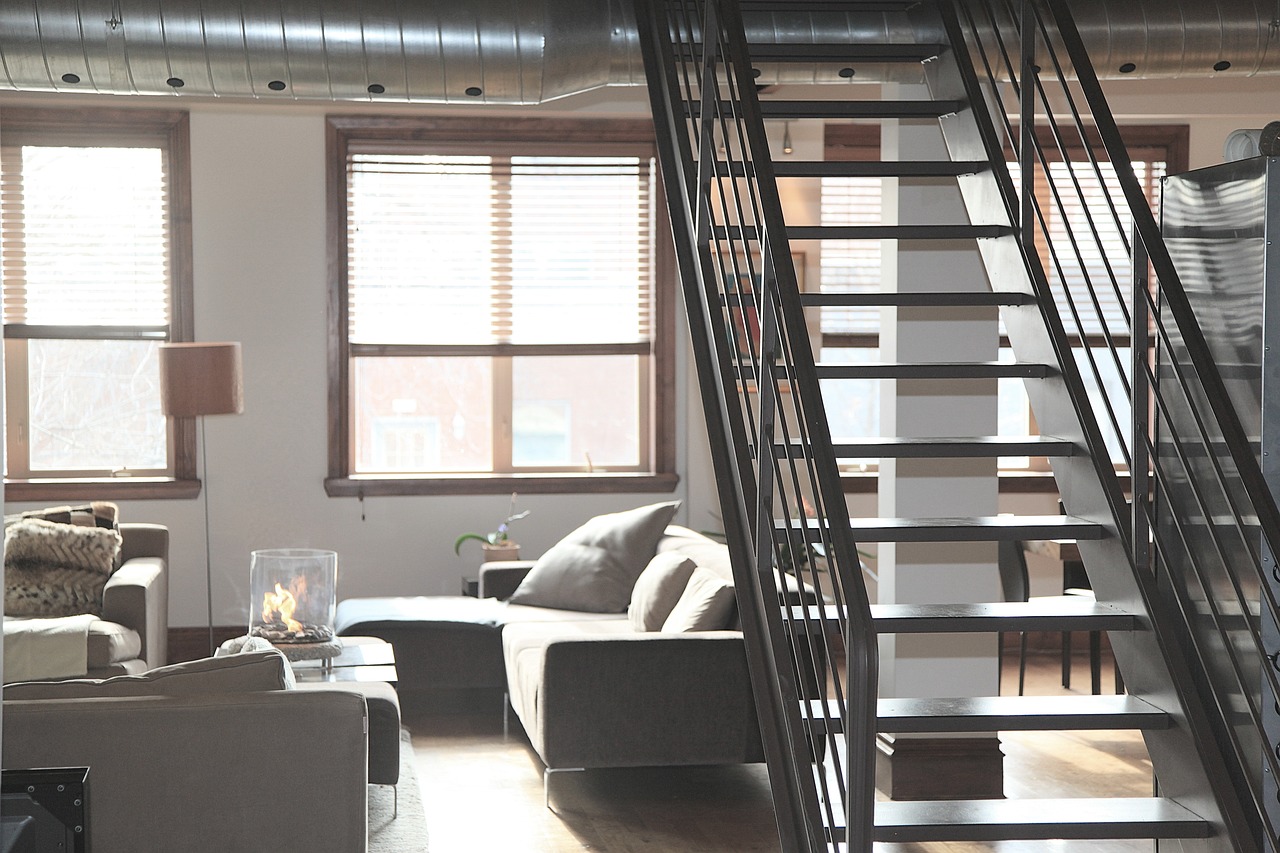
Organizing Your Workspace
When it comes to creating an effective home office, organization is key. Imagine trying to work in a chaotic environment where papers are scattered everywhere, and your desk resembles a disaster zone. It's not just distracting; it can also hinder your productivity and creativity. So, how can you transform your workspace into a haven of efficiency? Let’s dive into some practical strategies that will help you organize your home office effectively!
First and foremost, consider the layout of your workspace. A well-thought-out layout can significantly enhance your workflow. Position your desk in a way that allows for natural light to flood in, as studies show that good lighting can improve mood and productivity. Additionally, keep frequently used items within arm's reach. This minimizes the time spent searching for supplies and maximizes your focus on the task at hand.
Next, let’s talk about decluttering. It's essential to regularly assess what items are truly necessary in your workspace. Start by sorting through your belongings and categorizing them into three groups: keep, donate, and discard. This not only clears up physical space but also creates a mental clarity that is often overlooked. A clutter-free desk can be likened to a blank canvas, offering you the freedom to create without distractions. Remember, less is more!
To maintain organization, consider investing in some storage solutions. Here are some options that can help you keep your workspace tidy:
- File cabinets: Perfect for keeping documents organized and out of sight.
- Drawer organizers: These can help you categorize office supplies like pens, paperclips, and sticky notes.
- Wall shelves: Utilize vertical space by adding shelves to store books or decorative items that inspire you.
Furthermore, technology can play a significant role in keeping your workspace organized. Use digital tools to manage tasks and schedules. Applications like Trello or Asana can help you keep track of projects, ensuring nothing slips through the cracks. Additionally, consider going paperless whenever possible. Not only does this reduce clutter, but it also contributes to a more sustainable environment.
Lastly, don't underestimate the power of personal touches. Adding elements that reflect your personality, such as photos, artwork, or plants, can create a welcoming atmosphere. Just be careful not to overdo it; the goal is to enhance your workspace without adding to the clutter. A well-organized office is a reflection of your mindset, so make it a space that inspires you to do your best work!
Q: What are some quick tips for decluttering my workspace?
A: Start by sorting items into categories: keep, donate, and discard. Aim to clear out anything that you haven't used in the last six months.
Q: How often should I reorganize my home office?
A: It's a good idea to reassess your workspace every few months to ensure it meets your needs and remains clutter-free.
Q: Can technology really help with organization?
A: Absolutely! Digital tools and applications can streamline your tasks and help you manage your time more effectively, reducing the need for physical paperwork.
Frequently Asked Questions
-
What are the key security measures for my home office?
When setting up a home office, it's crucial to implement both physical and digital security measures. This includes installing high-quality locks on doors and windows, using alarm systems, and considering surveillance options. On the digital side, ensure you have strong passwords, use firewalls, and regularly update your software to protect sensitive information.
-
How can I assess my home office security needs?
Start by evaluating the potential risks in your home office environment. Consider factors like the location of your home, the value of the equipment you have, and any previous security issues. Conduct a thorough walkthrough to identify vulnerabilities, such as unsecured entry points or areas where sensitive information is exposed.
-
Are smart locks worth the investment?
Absolutely! Smart locks offer convenience and enhanced security features that traditional locks may lack. They allow you to control access remotely, monitor entry logs, and even integrate with your home security system. Plus, you can grant temporary access to guests without needing to hand over a physical key.
-
What ergonomic furniture should I consider for my home office?
When choosing ergonomic furniture, look for chairs that provide good lumbar support and desks that can accommodate your height. Adjustable chairs and desks are ideal, as they allow you to customize your workspace to fit your needs. Remember, a comfortable workspace can significantly boost your productivity and overall well-being.
-
How can I keep my home office organized and clutter-free?
Start by decluttering your workspace regularly. Use storage solutions like filing cabinets and shelves to keep documents and supplies organized. Implement a system for managing paperwork, such as digital filing or using labeled folders, to minimize distractions and create a more efficient work environment.
-
What digital security practices should I follow?
To maintain a secure digital environment, always use strong, unique passwords for your accounts, enable two-factor authentication, and regularly update your software and antivirus programs. It's also wise to back up your data regularly and be cautious when opening emails or clicking on links from unknown sources.



